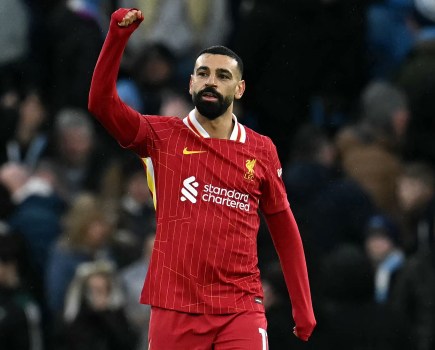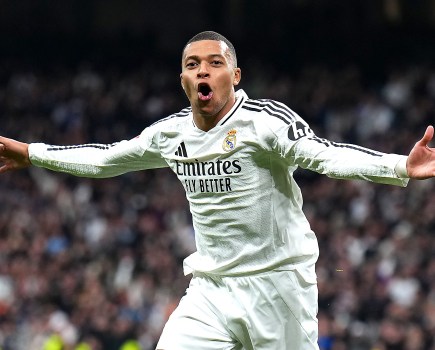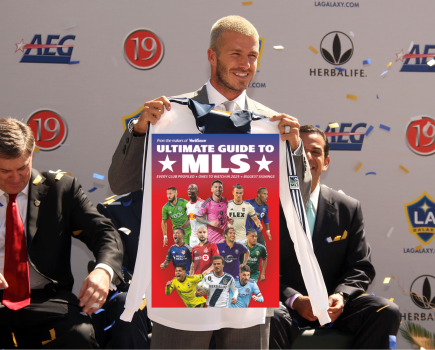 The pressure of being labelled as the next Paolo Maldini can be strenuous on any soul, but Francesco Coco for a moment looked like he might have been the replacement for the legendary left-back for both club and country. When the adventurous full-back, who also had the capabilities to play in midfield, broke onto the scene in the mid 90’s, Milan looked to have the heir apparent to the iconic captain.
The pressure of being labelled as the next Paolo Maldini can be strenuous on any soul, but Francesco Coco for a moment looked like he might have been the replacement for the legendary left-back for both club and country. When the adventurous full-back, who also had the capabilities to play in midfield, broke onto the scene in the mid 90’s, Milan looked to have the heir apparent to the iconic captain.
Coco moved to the province of Legnano, Milan, at the age of three, and after a few years in Como’s academy playing as a striker, was signed by Milan. When making his debut against Padova in 1995, goalscorer and Captain Francesco Baresi dedicated his winning goal to Coco, hoping to bless his new career. Sicilian born Coco was not like most traditional full backs. Despite playing on the left, his preferred foot was his right which played favourably into his hands when facing an inside forward, but not much so when pushing up-field. Known for his pace, physicality, determination and stamina, Coco also had the ability to cross with both feet which left the Milanisti excited about how good he could become.
Loan spells to Vicenza (hampered by a knee injury) and Torino allowed the Sicilian to gain valuable match experience and upon his return in 2000 he made his Azzurri debut in the 3-0 win against Romania. After this successful 2000/01 campaign he was given the surprise opportunity to play for Barcelona, thus becoming the first Italian to play for the Blaugrana. He impressed the Catalans with his performance in the 2-0 win at the San Siro the previous season where he scored the first and assisted Oliver Bierhoff for the second. Fatih Terim had no reluctance in letting him move to Spain on loan, with the Turk preferring Serginho ahead of the Italian.
His spell in Spain was mixed. He battled with crowd favourite Sergi for a place in defence and made over 20 appearances, but Barça had a poor season under Carles Rexach and only finished fourth. Despite this, Italian manager Giovanni Trapattoni included him in his World Cup squad to play in Japan and South Korea. He did not make his first appearance until the final group game against Mexico, where his introduction added energy and saw the Italians qualify for the knockout tie against South Korea. With Alessandro Nesta and Fabio Cannavaro unavailable, this provided Coco with an opportunity, and despite the Italians dubious exit from the tournament, the Italian press were supportive of Coco’s performance. His displays did not go unnoticed and during the competition in the Far East he made a controversial switch.
A swap deal to Inter saw Clarence Seedorf go in the other direction, in a move estimated to be worth €28m, and it seemed Inter were more pleased with the outcome. Seedorf around this time was regarded as inconsistent and Milan fans were puzzled by his signing when they already had Andrea Pirlo and Manuel Rui Costa in the same position. Coco however had no intentions of leaving, but felt he was forced out “I was hoping to stay forever but the club decided not to pursue a youth policy, just think of the sale of [Cristian] Zenoni and [Gianni] Comandini.”
Unfortunately for Coco, the switch to the Nerazzuri proved to be a failure. Chronic knee problems were the crux of the problem, but the defender succumbed to the nightlife of the capital. He is notorious for having relationships with models, and when asked by Milan what his favourite hobby was, he answered “women”. He would constantly be seen in the tabloids for his playboy lifestyle, and he seemed to relish it, even appearing in the Italian version of Celebrity Love Island.
The ending to his time at Inter was not very civil. He accused the club of treating him poorly and not giving him the right treatment. After undergoing back surgery in 2003 thanks to the club’s recommendation, his return was not a month as predicted, but two years. Here he reflects on his relationship with Roberto Mancini
“He has never given me a chance, from day one. He brought [Giuseppe] Favalli from Lazio, and Favalli had to play, always”
It was rumoured Mancini froze him out by not allowing him to have a club locker, nor train with the first team nor even attend their Christmas dinner. He went on loan to Livorno and Torino to escape the problems, and he nearly moved to England after his contract was terminated in 2007. Initially Coco had been linked to Everton in 2005, and two years later had a trial at Manchester City, although it is reported he was not signed because he was caught smoking before a fitness test. A move to Newcastle broke down over personal terms and he was also close to joining QPR under the leadership of Flavio Briatore. Despite this, he could not find a new club in spite of being linked to American sides New England Revolution and New York Red Bulls and a move to Brazilian side Botafogo with Christian Vieri.
After his failure to find a new club, Coco retired from football in pursuit of an acting career, which also has not turned out well. He then decided to become a businessman, and along with his father owns some shops in Catania and Milan as well as setting up his own fashion label Urban 77.
Since retirement ironically Coco’s private life seems to have been quieter, with him doing punditry for Sky Italia during the Champions League and reportedly becoming an estate agent after a spell living in Hollywood. Coco is an example of how a lack of application along with ill-fortune can prevent a prodigious talent from becoming a success.
By Jamie Lindsay
This article originally appeared in In Bed with Maradona






